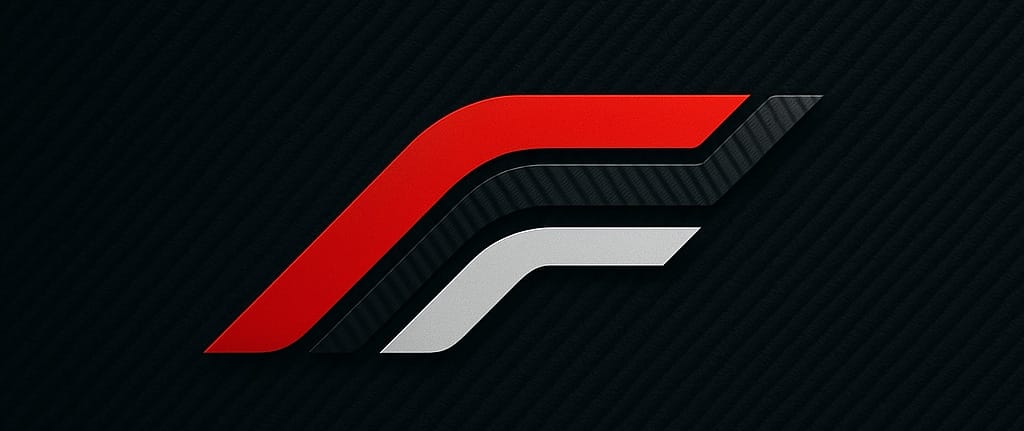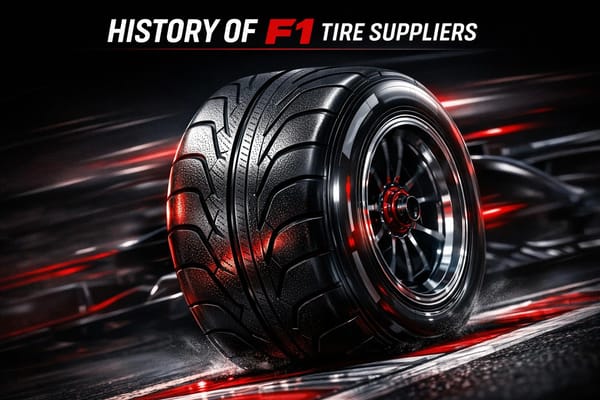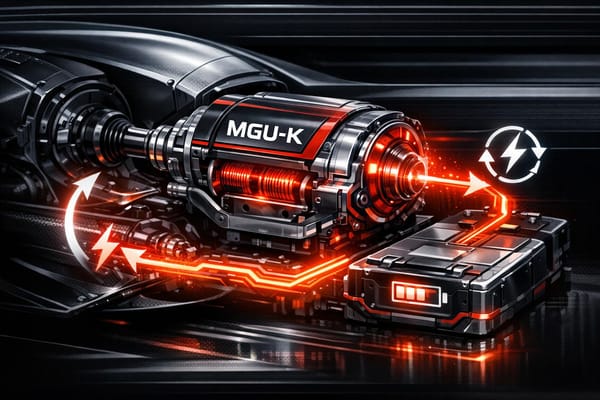How F1 Radios Work in Pit Operations
Explore how advanced radio systems enable clear communication and split-second decision-making in high-pressure Formula 1 races.
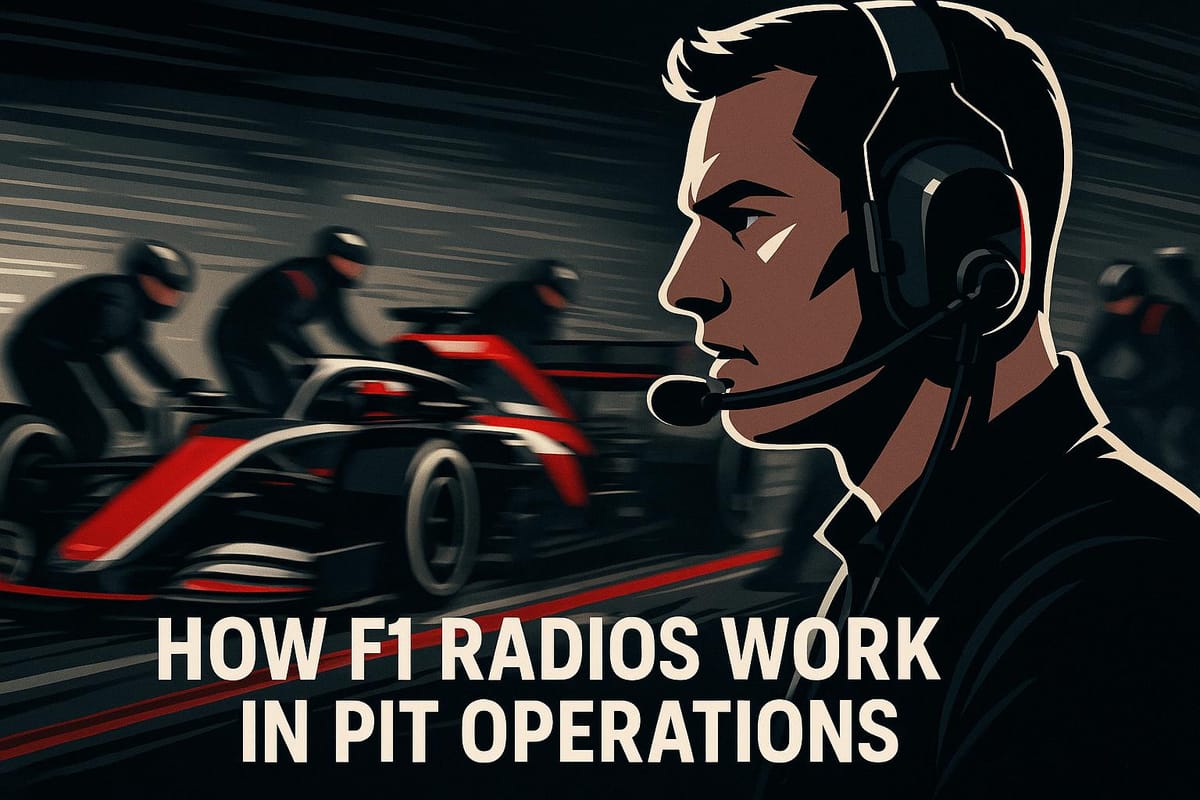
Formula 1 teams rely on advanced radio systems to make split-second decisions during races. These systems ensure clear, secure communication between drivers, engineers, and pit crews, even in noisy and high-pressure environments. Here's what you need to know:
- Key Components: TETRA digital radios, base stations, in-car units, and noise-canceling headsets.
- Communication Protocols: Standardized commands like "Box, box, box" ensure quick, clear instructions.
- Challenges: Teams face signal interference, equipment malfunctions, and weather impacts but use encryption, rugged hardware, and backup systems to stay connected.
- FIA Rules: Strict regulations govern what can be communicated during races to ensure fairness.
- Future Tech: Innovations like integrated voice, telemetry, and video systems are on the horizon.
These systems are the lifelines of F1, enabling teams to coordinate strategies and adapt instantly, where every second counts.
How Do F1 Teams Communicate Over A Race Weekend? Albert Fabrega’s F1 TV Tech Demo
Radio System Hardware and Setup
F1 teams rely on cutting-edge digital radio systems to ensure seamless communication during races. These systems are designed to withstand the intense demands of race environments, blending advanced technology with durable hardware. Here's a closer look at how these systems work and the key components involved.
Basic Radio System Components
The backbone of F1 communication is the TETRA digital trunked system, operating in the 380–430 MHz range for voice transmissions. This system uses encrypted channels to safeguard team strategies from competitors. Its digital framework also excels at reducing noise, a critical feature in the high-decibel world of racing. Compared to analog systems, digital setups like the Kenwood NX3000 series provide up to 30% more range under race conditions.
Key components of the radio system include:
- Base Station: Acts as the main communication hub in the pit lane.
- Vehicle Radio Unit: Installed beneath the driver's seat for efficient connectivity.
- Digital Signal Processors (DSPs): Reduce noise and enhance voice clarity.
- Encryption Modules: Ensure secure communication.
Communication Equipment
Each team member uses specialized communication gear tailored to their specific role. For instance, the driver's radio unit is strategically placed under the knees and directly connected to the car's electrical system. A transmission button on the steering wheel allows the driver to communicate without taking their hands off the wheel.
| Team Role | Equipment Type | Key Features |
|---|---|---|
| Driver | In-car System | Compact under-knee placement, steering controls |
| Pit Crew | Lightweight Headsets | Noise-canceling, water-resistant design |
| Engineers | Base Station Units | Multi-channel monitoring, data integration |
This tailored approach ensures that every team member has the tools they need to stay connected during the race.
Network Coverage at Race Tracks
To maintain uninterrupted communication, teams deploy well-positioned antenna systems around the track. The car's primary antenna, located on the nose, ensures optimal signal transmission to pit receivers. This setup guarantees reliable communication even at speeds exceeding 200 mph.
F1 radio systems utilize dedicated frequency bands for different purposes: 380–430 MHz for voice, 10/60 GHz for telemetry, and separate bands for video. The hardware is built to withstand tough conditions, featuring IP67 water and dust resistance. Additionally, Digital Signal Processing (DSP) technology eliminates engine and environmental noise, ensuring clear communication throughout the race weekend, regardless of weather or track conditions.
Pit Stop Communication Methods
Clear communication during pit stops is a cornerstone of success in Formula One racing. Building on the use of specialized radio hardware and protocols, teams rely on precise and efficient exchanges to make split-second decisions that can define the outcome of a race.
Team Communication Structure
In the high-pressure environment of Formula One, communication operates within a well-defined hierarchy to ensure smooth coordination. The race engineer acts as the key link between the driver, strategists, and pit crew, orchestrating decisions and actions with precision.
| Role | Primary Responsibility | Communication Direction |
|---|---|---|
| Race Engineer | Central coordinator | Directly communicates with the driver and strategists |
| Pit Wall Strategists | Strategy decisions | Relays decisions to the race engineer |
| Pit Crew Leader | Oversees pit stop execution | Reports readiness to the race engineer |
| Driver | Executes and provides feedback | Communicates exclusively with the race engineer |
This structure ensures that every team member knows their role and how information flows, minimizing confusion during critical moments.
Standard Pit Radio Terms
To further streamline communication, Formula One teams use a set of standardized radio commands. These terms eliminate ambiguity and allow teams to act quickly under pressure.
| Command | Meaning | Usage Context |
|---|---|---|
| "Box, box, box" | Immediate pit entry | Signals the driver to enter the pit lane urgently |
| "Pit confirm" | Acknowledgment | Driver confirms the received instruction |
| "Option tires" | Soft compound tires | Indicates a specific tire strategy |
| "Prime tires" | Hard compound tires | Used for a different tire strategy |
| "Front wing adjustment" | Aerodynamic changes | Refers to technical adjustments to the car |
These commands are designed to be short, clear, and universally understood within the team, ensuring quick responses even in chaotic race conditions.
Quick Strategy Changes
Standardized communication is critical when race conditions demand sudden strategy shifts. Pit lanes can reach noise levels of over 130 dB, so teams utilize DSP4 noise cancellation technology to ensure messages are heard clearly.
To handle rapid changes effectively, teams rely on:
- Established protocols for common scenarios, ensuring everyone knows the plan in advance.
- Code words that allow for efficient communication without lengthy explanations.
- Acknowledgment requirements for critical instructions, confirming that key information has been understood.
The balance between providing detailed information and maintaining the driver's focus is a delicate one. Teams must also adhere to FIA regulations, ensuring their communication remains compliant while delivering the clarity needed during race-defining moments.
Common Radio System Problems
Even with cutting-edge designs, F1 radio systems often encounter technical hiccups that disrupt pit-to-car communication during races.
Signal Problems and Solutions
One of the biggest hurdles is signal interference, as teams operate within a crowded frequency spectrum shared with other users. To address these challenges, teams employ a variety of technical strategies:
| Challenge | Technical Solution | Implementation Details |
|---|---|---|
| Signal Interference | Advanced encryption | Reduces the risk of external interference |
| Bandwidth Limitations | Multiple channel distribution | Teams request up to 24 independent channels per race |
| Cross-talk | Frequency management | TETRA digital trunked radio systems help streamline communication |
These signal-related issues can increase the strain on equipment, as explored in the next section.
Equipment Malfunctions
The intense conditions of F1 racing put significant stress on communication equipment, leading to frequent malfunctions. Here are some common issues and how teams tackle them:
-
Power Supply Issues
Voltage fluctuations during a race can disrupt radio performance. To counter this, teams rely on redundant power setups and backup batteries. -
Physical Component Damage
Equipment faces constant exposure to high vibrations and G-forces, which can damage components. Teams combat this by using ruggedized equipment, including antennas mounted in protected areas and secondary backup units. -
Control Interface Problems
Steering wheel radio buttons are prone to failure. To ensure reliability, teams incorporate multiple activation methods as a safeguard.
Beyond hardware challenges, environmental factors also play a significant role in communication reliability.
Weather Impact on Communications
Weather conditions can severely affect radio performance, requiring specialized equipment and adaptive protocols. Below are some examples:
| Weather Condition | Impact | Solution |
|---|---|---|
| Heavy Rain | Signal degradation and noise | Advanced noise-canceling technologies |
| Lightning Storms | Electromagnetic interference | Shielded housings and increased transmission power |
| Extreme Temperatures | Stress on components | Weatherproof casings and redundant systems |
To mitigate these risks, teams deploy waterproof equipment and boost transmission power when necessary. If communication systems fail entirely, backup methods like visual signals and pit boards are used to maintain coordination.
Rules and New Technology
FIA Radio Rules
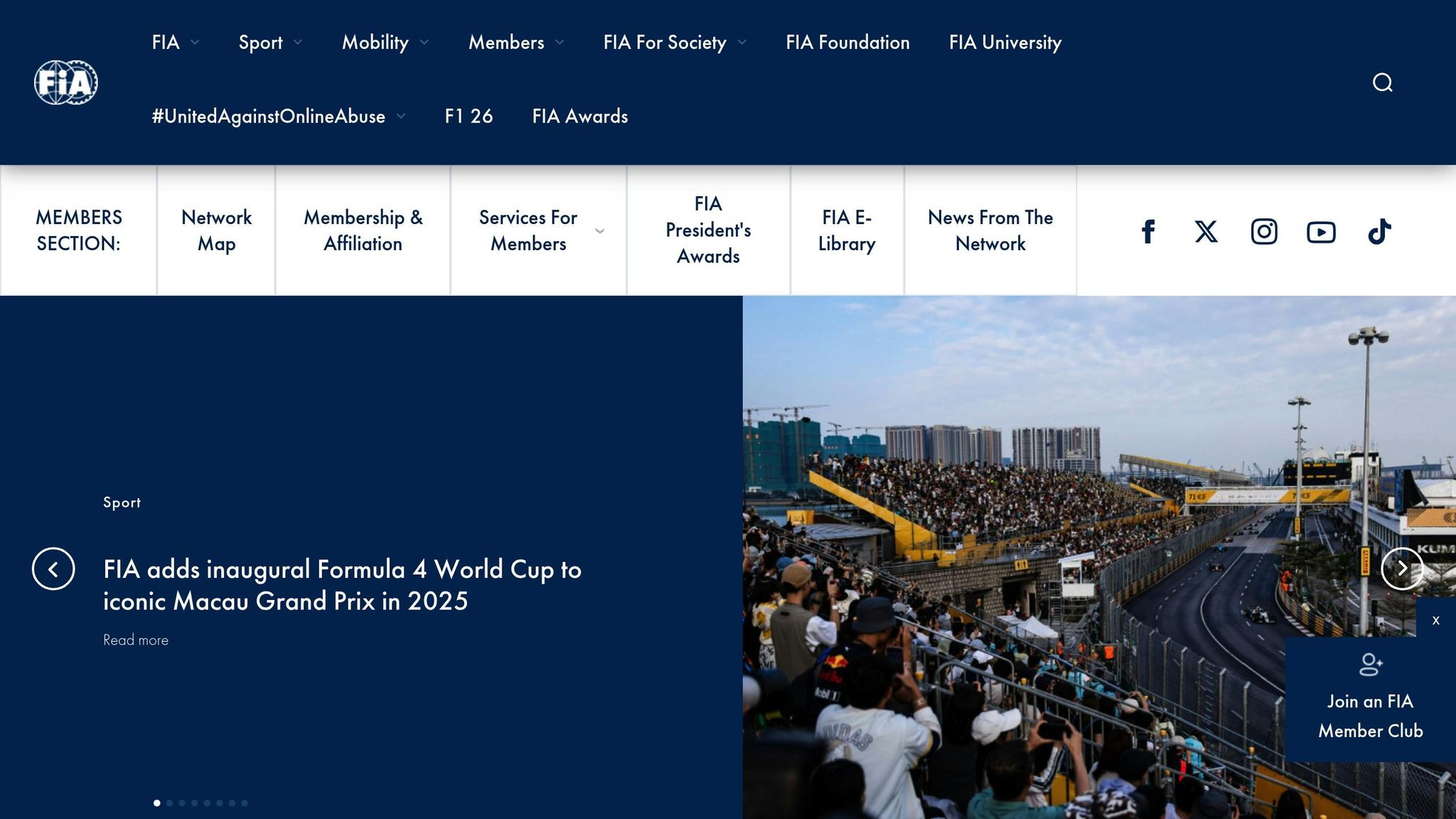
In Formula 1, strict rules govern in-race communication to maintain fair play and safety. The FIA keeps a close eye on all team transmissions, allowing messages about track conditions, hazards, and system status while banning instructions that could coach drivers on technique. Teams are required to log every radio transmission for FIA review. Breaking these rules can lead to penalties, including fines or even disqualification from a race.
To stay ahead, teams are now leveraging cutting-edge digital systems to improve how they communicate.
New Communication Systems
Many F1 teams have turned to advanced tools like the Riedel Bolero system. This technology brings several key features to the table:
- Decentralized networking to boost reliability during races
- Improved audio clarity to cut through the deafening noise of the track
- Strong encryption to safeguard communications from being intercepted
Next Generation Radio Tech
With recent advancements, the next wave of communication systems is set to combine voice, telemetry, and video into a single platform. These systems aim to deliver real-time data integration while continuously enhancing encryption to meet FIA's evolving standards.
"According to F1 Briefing, top teams like Mercedes and Red Bull have invested heavily in custom radio solutions, using encrypted, multi-channel systems to coordinate complex strategies and adapt to dynamic race conditions." - F1 Briefing
These innovations underline the importance of staying ahead in the high-stakes world of Formula 1, where every second - and every word - counts.
Conclusion: Radio Systems in Modern F1
Radio systems play a crucial role in Formula 1, serving as the backbone of pit operations and enabling teams to make split-second decisions. These systems process real-time telemetry, weather updates, and competitor data, all while cutting through the deafening engine noise that exceeds 130 dB. Technologies like TETRA ensure secure and clear communication, allowing teams to adapt strategies instantly during high-pressure moments.
Looking ahead, the evolution of these systems is set to take communication to new heights. Future advancements are expected to integrate voice commands, telemetry data, and even augmented reality, creating a seamless flow of information that enhances team coordination and influences race outcomes.
In a sport where fractions of a second can decide a win, these communication networks are not just tools - they're lifelines. As Formula 1 continues to push the boundaries of technology, the effectiveness of radio systems will remain a key factor in determining success on the track.
FAQs
How do F1 teams keep their radio communications secure during races?
Formula One teams rely on encrypted radio systems to keep their communications secure and out of reach from rival teams. These systems use advanced encryption protocols that scramble messages, ensuring they can't be decoded without the correct decryption keys.
Beyond encryption, teams operate on dedicated frequencies and actively monitor for any interference or security breaches. This approach safeguards sensitive details like race strategies, pit stop timings, and car performance data, keeping them confidential during the intense competition.
What is the race engineer's role in team communication during a Formula 1 race?
The race engineer plays a key role as the main connection between the driver and the rest of the team during a Formula 1 race. They share essential updates like strategy changes, tire behavior, and track conditions, while also taking in the driver's feedback to adjust plans on the fly.
This position is all about keeping communication smooth and effective. The race engineer acts as a filter, organizing and prioritizing input from different team members - such as strategists and technical experts - before relaying it to the driver. Their ability to deliver clear and timely messages can make a huge difference in performance and split-second decision-making during the race.
How do F1 teams handle radio signal issues and equipment failures during a race?
F1 teams rely on highly sophisticated radio systems to maintain clear and dependable communication during races. These systems are built to operate on secured, encrypted frequencies, reducing the risk of interruptions from overlapping signals or outside interference. To further safeguard communication, teams also prepare with backup equipment and detailed contingency plans to handle any technical hiccups.
Throughout the race, engineers and technicians keep a close watch on the radio systems, ready to detect and fix problems as they arise. This constant vigilance ensures that the critical exchange of information between the driver and the pit crew remains seamless, even under the intense pressure of race conditions.
